Beer has been around since the dawn of civilization and is one of the world’s most popular drinks. However, its creation is shrouded in mystery and the inventor of beer is unknown. In mythology, Osiris, the Egyptian god of agriculture, is credited with teaching humans how to manufacture beer. In ancient Egypt, beer was made by burying barley in pots to promote germination and then fermenting the malt paste with wild yeast. It is believed that hops may have been used as early as the 7th century BC. Almost every modern industrialized nation now has its own brewery, a tradition that originated in northern Europe at the beginning of the Christian era.
- Who Invented Beer
- Beer in Egyptian Tradition
- Beer’s History in Europe
- Towards the “Sacredness” of Beer
- The Monastic Brewing Revolution
- Beer: From Monasteries to Guilds
- From the Ancien Régime to the Industrial Revolution
- Distribution and Production of Beer in the 19th Century
- Pasteur’s Legacy to Beer
- The Main Ingredients of Beer
- The Making of Beer
Who Invented Beer
It is impossible to determine exactly when beer was invented. It is generally believed that it originated in Mesopotamia around 8000 BC, when the earliest civilizations in the Middle East learned to farm grains, particularly barley and spelt (a kind of wheat). This region between the Tigris and Euphrates rivers has been documented since the 4th millennium BC. The Sumerians were among the first to write and their clay tablets have given us the names of twenty different beers and the methods for making them.
Beer was essentially “liquid bread,” and the production method was as easy as baking a loaf of bread. Small loaves of bread were produced from germinated and crushed grain seeds and then partially baked in an oven. The Sumerians would then break them up and put them in enormous jars of water to ferment for a few days. They added dates or honey for flavor and drank through reeds to filter out any particles that could be suspended in the liquid.
The making of beer received a boost from the Babylonians, who also established guidelines for the process in the 2nd millennium BC. In this period, the code of King Hammurabi regulated the manufacturing and taxation of beer, punishing bad brewers by drowning them in their own product. However, it was in ancient Egypt that beer-making really took off.
Beer in Egyptian Tradition
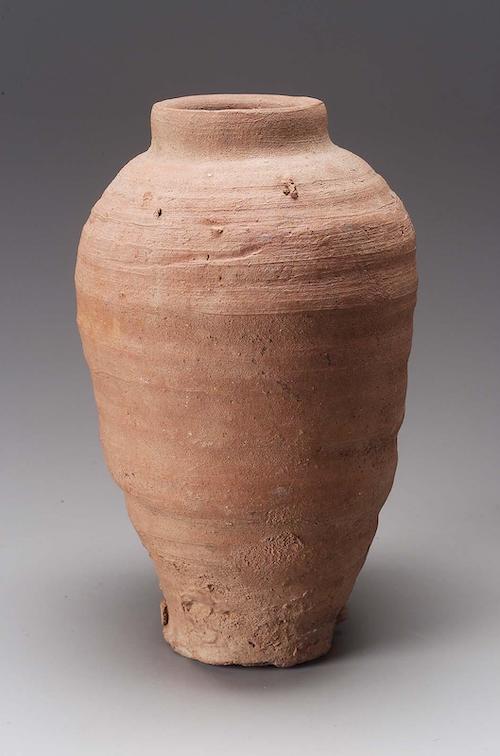
Beer was supposedly invented by the Egyptians in 3000 BC. During the 19th century, archaeologists discovered grain storage baskets in pharaonic graves. On their voyage through the afterlife, was it cereal to produce bread or, on the contrary, to spawn a drink? Beer in ancient Egypt was flavored with juniper, ginger, saffron, and other spices and was known as heget or zythum in Greek, literally “barley wine,” as described by Herodotus in the 5th century BC. Since grapevines were not grown in Egypt, the locals fermented barley into wine instead. Later, commercial brewing developed, whether for the pharaoh’s enjoyment, the relief of the laborers constructing the pyramids, or the fulfillment of medical prescriptions.
Beer, in particular, was a vital part of the ancient diet because it provided essential nutrients, including amino acids and vitamins in ancient Egypt. Hundreds of treatments using beer are documented in ancient medical texts like the Ebers Papyrus, which dates back to the 2nd millennium BC. There are components in beer that improve skin tone and texture. Cleopatra allegedly used beer in her baths. However, the most significant function played by beer was in cultic contexts.
It was a present from the Sumerians and Babylonians. The latter group used a special drink called sikaru to toast the gods. According to the Egyptian Book of the Dead, beer was taken to the afterlife with the deceased. The beer was also supported by two deities in the Egyptian pantheon: Osiris, patron of brewers, and Isis, defender of grains. As grain culture expanded to new areas, there were fewer barriers preventing the spread of beer.
Beer’s History in Europe
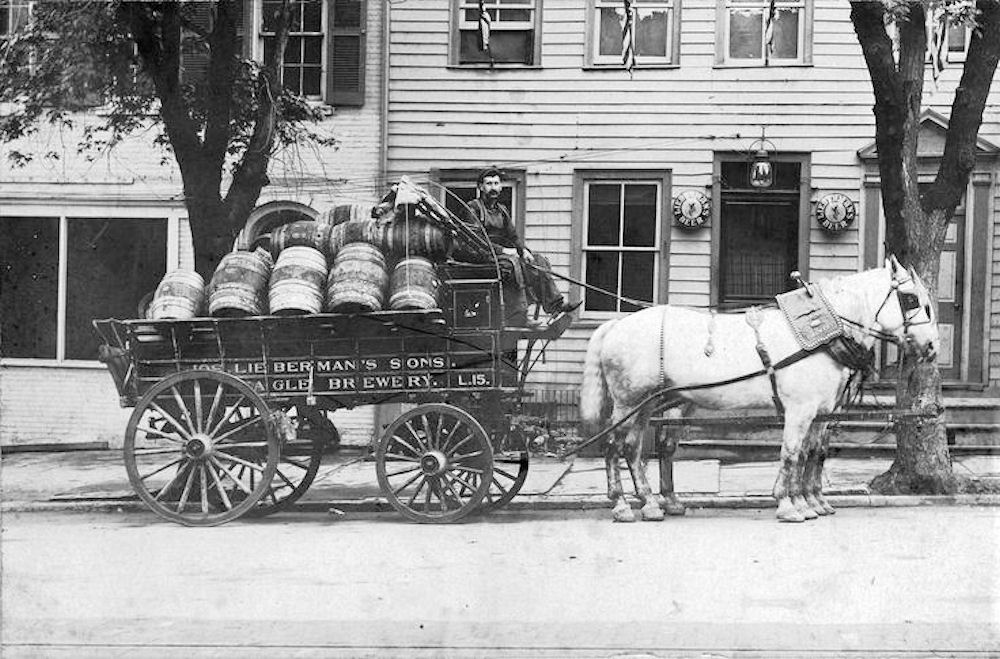
Beer was initially considered a drink for the poor by ancient Greeks and Romans, who preferred wine. However, beer made its way to Gaul and other cooler regions where wheat and barley production was more common through the Iberian Peninsula because how they were more advantageous than grape cultivation. This led to the development of distinct beer cultures in Northern and Southern Europe. According to Tacitus, beer had become the preferred beverage of the Gauls and Celts by the first century, known as korma and cervoise, respectively. The Latin word for beer, cervesia, is derived from Ceres, the goddess of harvests and grains.
Back then, beer brewing was a collaborative effort by female family members. Indeed, in the very hearts of most houses, women were the ones in control of domestic production. Later, barley and wheat were added to the mash, and cumin was used to add flavor. A variety of alterations, such as juniper berries or mead, were possible. The “foudre” (a sort of barrel) for fermentation and the barrel for storage and transport are both innovations we owe to the Gauls. Beer could only be stored for a limited period, so it required rapid transportation of large quantities. These two innovations helped facilitate the trading of this beverage.
Though beer had been around since ancient times, it wasn’t until the Middle Ages that its production really took off, and not in the kitchens of homes but in the cellars of monasteries.
Beer, which had been overlooked since its origins in Greek and Roman culture, gained respect when it spread across Europe in the early Middle Ages. During the Middle Ages, hops were used more and more. This gave beer brewing a new level of importance as it became popular with royalty, nobility, the Church, and monastic groups.
Towards the “Sacredness” of Beer
Beer was just as secretive in the High Middle Ages as it had been in late antiquity. In fact, it was made entirely within the confines of a single household. However, the Church condemned it as the devil’s beverage of choice in contrast to wine, which was seen as the blood of Christ. Despite this, beer rapidly evolved into something new. Around the 7th and 8th centuries, monks began to take an interest in brewing beer when they established legitimate breweries near their monasteries. They drank beer every day, both for themselves and to fulfill their hospitality and charity obligations for pilgrims, the sick, and passing visitors, especially because beer was cheaper than wine. Later, when they needed more money, they sold the extra beer, just as they do today with their exquisite and rare Westvleteren Trappist beer.
Beer was not only an alcoholic drink but also a comfort drink and a medicine against infectious diseases because of its fermentation process. This technique was effective in preventing the major pathogenic threats of the era. The Church even saw beer as a gift from God; the operation of the yeast could be interpreted as a miracle, and even though medieval people had no idea how it worked, they certainly liked the end result.
During the Middle Ages, several saints were honored with the responsibility of protecting beer, just as the old gods were. For instance, Saint Arnould who served as Bishop of Metz in the 7th century, filled the empty jugs of the thirsty devout, earning him the title of patron saint of French brewers. Another Saint Arnould, from Flanders, is credited with preventing a plague from spreading across a community by encouraging its residents to use beer instead of water. The brewers of Ireland venerated Saint Columban, whereas those of Bavaria and Austria looked to Saint Florian for guidance. As a result, a different conception of beer emerged during the Middle Ages, which was mirrored by changes in brewing methods.
The Monastic Brewing Revolution

Throughout the Western Middle Ages, there was a trend of monks perfecting the skill of brewing and creating new styles of beer. They perfected several types of top fermentation, some of which are still referred to on modern abbey beer labels. The Swiss Benedictine monastery of Saint-Gall had three breweries, all of which were in operation by the 7th century and each produced a unique style of beer. The first, made of barley, was reserved for dignitaries and members of the church’s upper ranks (bishop, abbot, etc.); the second, made of oats, was used daily by the monks; and the third, made from something simpler, was given to pilgrims.
Hops were initially used by monks in Europe for their preservation qualities rather than their bitterness, which was not always desired. Hops “stopped the putrefaction and prolonged the conservation,” as the abbess Hildegard of Bingen wrote in 1079. The registers of German abbeys from the 8th century contain numerous references to hop crops. In the 16th century, hop production in the West reached its peak in Bavaria and Bohemia.
Additionally, a significant development that would have a major impact on the beer industry originated in these abbeys. It is about bottom fermentation. Fermentation was especially difficult to control from a bacteriological perspective during the hot summer months. The beer was then aged for lengthy periods of time in the monks’ chilly caves, changing the way the yeasts fermented the beer. Lagering, which literally means “preserving” in German, was given to the resulting type of beer. Lagers, the German beer style, continue to be brewed using bottom fermentation, while most beers in Belgium and England use top fermentation.
Beer: From Monasteries to Guilds
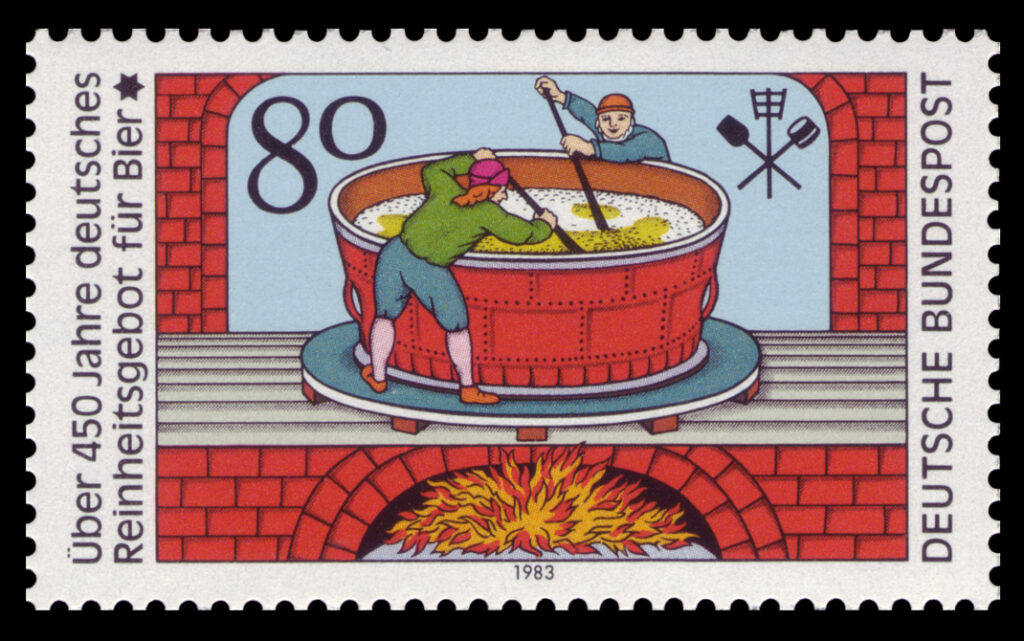
Even though monks played a significant role in establishing themselves as the leading brewers in the Middle Ages, they were not the only ones. According to an 11th-century charter from the bishop of Liège to the Huy brewers, small breweries also established themselves within urban towns. Brewers’ guilds, first mentioned in writing in the 13th century, emerged in the 14th and 15th centuries and were particularly formidable and luxurious in Flanders. Princes and nobles took the Brussels, Leuven, Hoegaarden, Antwerp, and Diest brewers’ guilds into consideration because they were the wealthiest and taxes on beer were a significant source of revenue.
Several laws were enacted to regulate the beer industry. It is well known that the Dukes of Burgundy cared about the standard of living in their region and, although their wine-measurement protocols were famous in Côte d’Or, they were not snobby about beer. It is important to note that the territory that is now Belgium was part of the Duchy of Burgundy at the time. In the 15th century, John the Fearless mandated hops as a spice and also established the Order of Hops. In 1516, William IV, Duke of Bavaria, enacted the code of purity known as Reinheitsgebot, which stated that “the beer can include just water, malt, and hops.” This regulation affected the entire German Empire and is still debated today by beer drinkers who believe that only German beer meets their health standards.
Therefore, the current categorizations of beer demonstrate the significant role the Middle Ages played in the development of this beverage. Its medieval origins explain why modern German beers are so different from Belgian beers, despite their proximity. Before the 19th century and the Industrial Revolution, beer had not changed significantly.
The Middle Ages may have laid the foundation for beer brewing, but it was the Industrial Revolution and advances in science that truly propelled beer into the modern era of mass production and distribution. Changes in the 19th century enabled beer to have the appearance, smell, and taste it has today.
From the Ancien Régime to the Industrial Revolution
Brewing during the contemporary era was still mostly done on a small scale by monks and housewives. Most brewers could only sell their products within a very small radius. The low market value of beer and the fact that it had to be transported in large, bulky barrels by horse and cart hindered its industrialization outside of major towns where demand was stronger. However, the ingredients for beer could be transported more easily, leading to real business opportunities in regional production and consumption.
In the Western world, authorities sought to regulate the production and sale of beer. For example, in 1544, Charles V passed legislation outlining the roles of brewers, dealers, and outlets (cabarets). As a result, those in authority became increasingly concerned with finding ways to regulate this popular commodity. In the 1630s, Louis XIII of France even established a group of controllers for brewers to help enforce laws on the use of hops in alcoholic beverages.
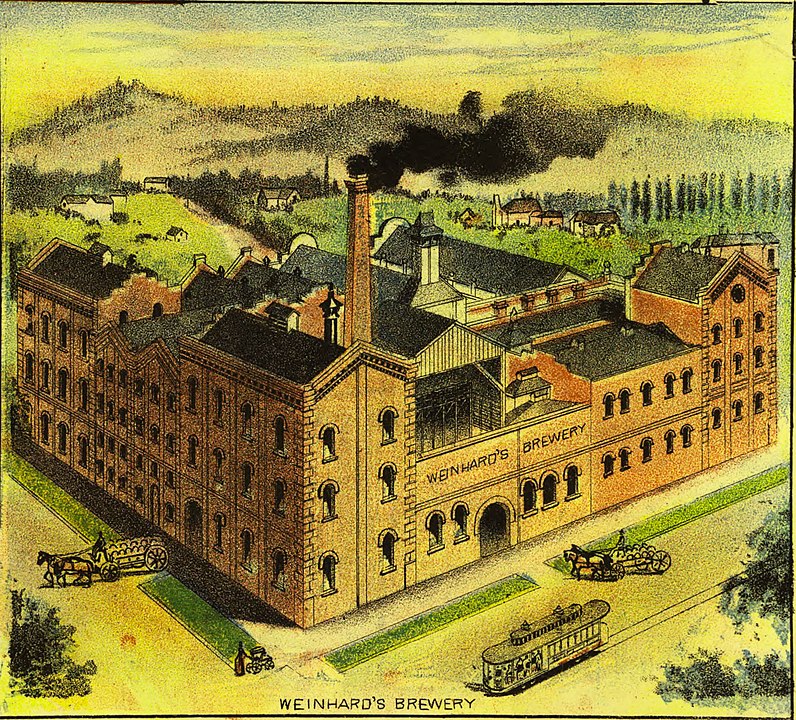
Beer was also brought to the New World during this period. Even though the Americas were already familiar with this drink (cassava beer prepared by the Jivaro Indians in South America was confirmed as early as the 16th century), the first breweries based on European technology were developed around the beginning of the 17th century in North America. In 1668 or 1669, with the help of Jean Talon, Intendant of New France, the first Quebec brewery opened. A century later, the Molson Brewery was founded in Montreal, making it the oldest American brewery in continuous operation. The American and European beer businesses did not really pick up again until the Industrial Revolution.
Distribution and Production of Beer in the 19th Century
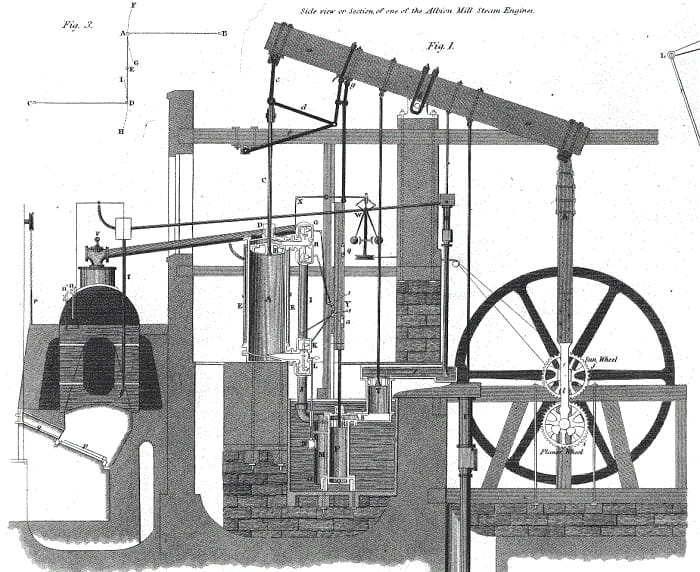
Beer’s industrialization in the 19th century may be likened to the expansion of transportation options at the time. Many contemporary breweries are located next to rivers not only because water is necessary in the production of beer but also because doing so facilitates its distribution through waterways.
While the expansion of canal transportation in the 18th century had some impact on beer’s success, it was the steam-powered railroad in the 19th century that truly revolutionized distribution. This led to the emergence of major worldwide breweries that also relied on steam to produce beer at scale, replacing the labor of humans and horses.
The end of the 18th century saw the first reports of this phenomenon. The Scottish inventor James Watt developed a new steam engine in 1774 that was quickly adopted by breweries in London. This engine replaced the work of hundreds of horses in grinding malt and pumping water. By the turn of the 19th century, London’s Whitbread Brewery had the highest output, producing approximately 200,000 barrels annually.
The development of industrial refrigeration in the 1830s made possible the low fermentation typical of the beers most people drink today. Thermometers and temperature control hydrometers were also among the technological advancements that impacted the large breweries. The development and widespread use of refrigeration equipment towards the century’s conclusion sealed the deal for this refreshing drink. This beverage went from being made by hand in a small town to a multi-million dollar business thanks to the advent of industrialization. The only thing left to do was crack the code of beer fermentation.
Pasteur’s Legacy to Beer
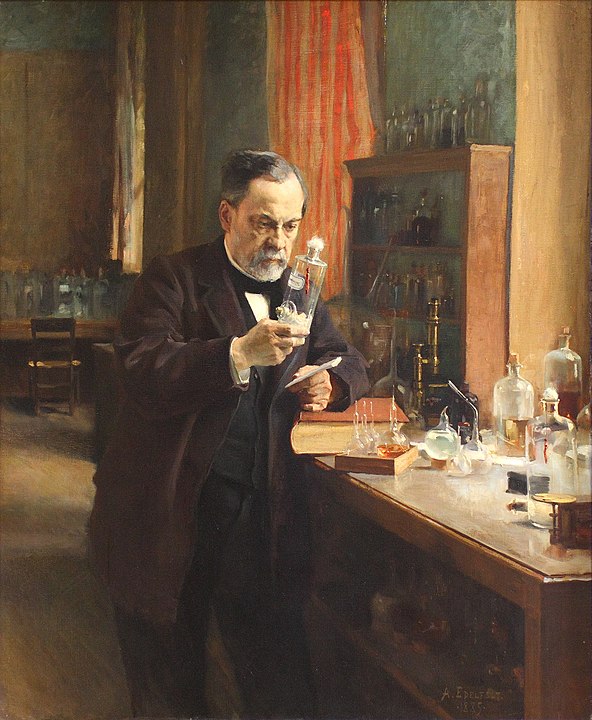
The French scientist Louis Pasteur‘s discovery paved the way for new innovations in the beer industry, which are largely responsible for the beer we know today. It was not easy to mass produce beer, especially brews with a high fermentation rate, as the resultant substance was often not very volatile, hazy, unstable, or rapidly acidic.
Inspired by the success of his 1866 study on wine, Pasteur helped French brewers improve their products so that they could better compete with their European counterparts. Yeast converts glucose into ethanol and carbon dioxide, and Pasteur set out to learn how this process works. In his 1876 study on beer, he explained the process of fermentation and offered some thoughts on how to keep items clean and safe from contamination before selling them. The beer was then subjected to a slow process of pasteurization, rendering it almost unchangeable and preserving it for months.
Thanks to improvements in science and technology in beer brewing, it is now possible to make a clear, taint-free drink that is on par with the best. In many ways, this is identical to the beer we are already drinking.
The Main Ingredients of Beer
Beer, like wine, is sourced from grains. There are several grains available for the brewer to choose from, with barley being the most popular option due to its starch content. Wheat (particularly for white beers), oats, spelt, rye, millet, and even sorghum can also be used in conjunction with or in place of barley. The grains are processed into malt, from which sugar is extracted.
Water makes up the majority of beer and its quality and bacteriological cleanliness play a significant role in the taste of the final product. The minerals present in the water can also affect the flavor of the beer, with calcium reducing the alkalinity of the grains and aiding in fermentation.
Hops are a vital ingredient in beer as they provide bitterness and help to preserve the beverage. There are now numerous types of hops, each with its own distinct flavor and level of bitterness. Spices such as cinnamon, cumin, paprika, cloves, juniper berries, coriander, star anise, and nutmeg can also be used in beer, as well as fruit flavors like kriek and alcoholic beverages like cognac, vodka, and tequila.
It is now possible to brew beer without using yeast, a single-celled bacterium that is responsible for fermentation by changing sugar into alcohol, and adds flavor and texture to the final product. There are various types of yeast, with the specific type often being kept secret by brewers.
The Making of Beer
Malting is the first step in the process of making beer. Grains, particularly barley, contain sugars that are only released during germination. To extract these sugars, the grains are induced to germinate and then dried before the plant develops further. The temperature at which the grains are dried can be controlled by brewers to create either a clear or caramel malt, and darker malts such as those used in Guinness impart chocolate and roasted coffee flavors.
The next phase of the brewing process is the core activity. The malt is ground into flour and mixed with water to form a paste, which is then heated to convert the starch into dextrins and maltose. After this brewing process, the resulting liquid, known as wort, is filtered to remove any remaining solid malt and boiled. Hops are added at this stage of brewing, and other spices may also be included. Once the desired fermentation temperature is reached, the wort is filtered and chilled.
Fermentation occurs when yeasts convert carbohydrates into alcohol and carbon dioxide. There are two main types of yeasts that cause different types of fermentation. Traditional beers from certain regions, such as Belgium, the UK, and northern France, undergo top fermentation for a week or less at temperatures between 15 and 25 °C. Bottom fermentation takes place at a cooler temperature range of 6 to 12 °C and can last up to 10 days. This process is used in lager and pilsner beers (classic lager). A third type of fermentation, called spontaneous fermentation, is used by a few breweries in Belgium to make lambic-style beers like gueuze. This process is more prolonged and complex, using natural yeast and requiring storage for a period of time.
The final steps in the process are aging and packaging. Beer needs time to mature after fermentation, so it is typically stored for a few weeks before being filtered to achieve clarity. It is then bottled or placed in barrels, and in some cases, carbon dioxide may be injected. The final step is tasting the beer.
Bibliography:
- Glenny, Misha (25 September 1986). “Last orders for Reinheitsgebot”. New Scientist.
- DeBenedetti, Christian (2 March 2011). “Brauereisterben: The sad state of German beer culture”. Slate.
- Cornell, Martyn (2003). Beer: The Story of the Pint. Headline. ISBN 0-7553-1165-5.
- Dornbusch, Horst (27 August 2006). “Beer: The Midwife of Civilization”. Assyrian International News Agency.
- Daley, Jason. “Oldest Evidence of British Beer Found in Highway Dig”. Smithsonian Magazine.
- Damerow, Peter (2002). “Sumerian Beer: The Origins of Brewing Technology in Ancient Mesopotamia”. Cuneiform Digital Library Journal.

